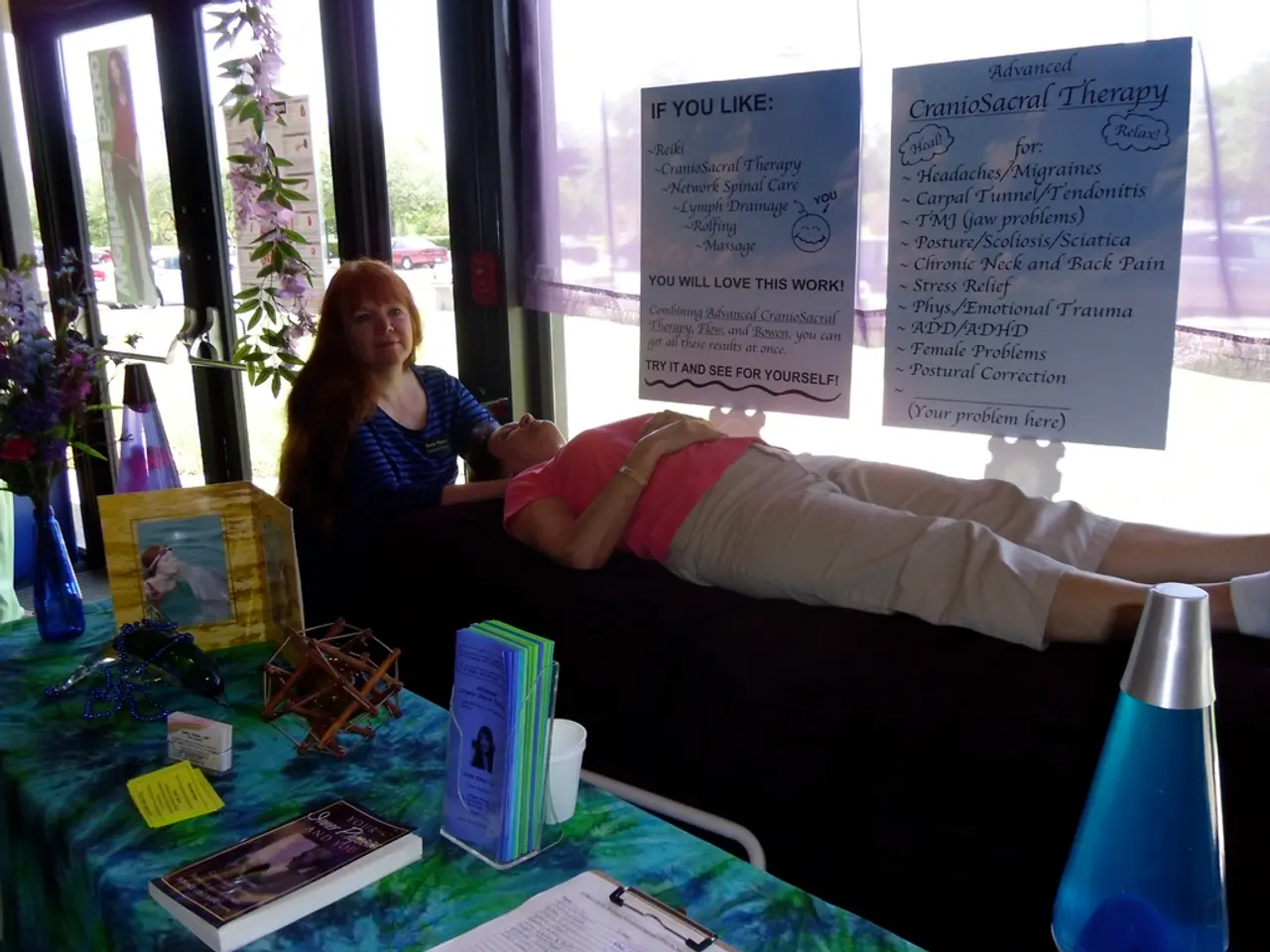Alleviating Physical Discomfort through the Practice of Meditation
Meditation has been found to be an effective tool for managing pain and reducing stress. By altering brain activity related to pain processing and emotional regulation, meditation can help decrease pain intensity by approximately 40%.
One common method for meditation is mindfulness meditation, which focuses on the present moment, often through breath awareness. This practice has shown consistent benefits for both managing pain and reducing stress. Other effective techniques include guided imagery, progressive muscle relaxation, and deep breathing exercises.
Guided imagery involves creating peaceful mental scenes, like lying on a beach, to calm the mind and distract from pain. Progressive muscle relaxation involves systematically tensing and relaxing muscle groups to reduce bodily tension that can worsen pain. Deep breathing exercises involve slow, diaphragmatic breathing that relaxes both body and mind, decreasing stress-related pain.
Mindfulness-based practices are the most studied and have shown consistent benefits for both managing pain and reducing stress. Regular practice, ideally daily for several weeks, enhances these effects.
Starting with just five minutes a day, using a timer or finding short mindfulness or body scan meditations on apps or YouTube, is a good starting point. As you become more comfortable, you can gradually increase the duration of your meditation sessions to 15 or 20 minutes.
Meditation does not require elaborate setups; it simply needs peace, quiet, and a comfortable spot at home. Props can be helpful for meditation, but they are not required. Being comfortable is important during meditation, and individuals might want to use a pillow or blanket for support.
It is recommended to find a comfortable position for meditation, which can be seated, laying down, or any position that feels good to the body. Some people use essential oils or aromatherapy during meditation, but it is best to check with a healthcare provider first to ensure it doesn't aggravate any medical conditions.
If you need help with meditation or managing chronic pain, don't be afraid to ask your healthcare provider for alternatives. Some healthcare providers offer programs that incorporate mindfulness-based strategies, along with massage, acupuncture, or nutritional services, to help people cope with chronic pain.
While meditation can't eliminate pain, it can help individuals calm down and observe sensations in their body, potentially leading to relaxation and acceptance of discomfort. Meditation leads to the release of endorphins, often referred to as 'feel-good' hormones, which can further enhance the relaxing effects of the practice.
In addition to traditional meditation practices, activities such as Qigong and yoga, which combine gentle movement with breath and mindfulness, can also be beneficial for easing pain and reducing stress overall.
- mindfulness-based practices in the realm of health-and-wellness, including meditation, have demonstrated consistent benefits for enhancing mental health by reducing stress and managing pain.
- Regularly incorporating scientifically-backed techniques such as guided imagery, progressive muscle relaxation, deep breathing exercises, or practices like yoga and Qigong into one's health routine can contribute significantly to overall wellness and mental health.




